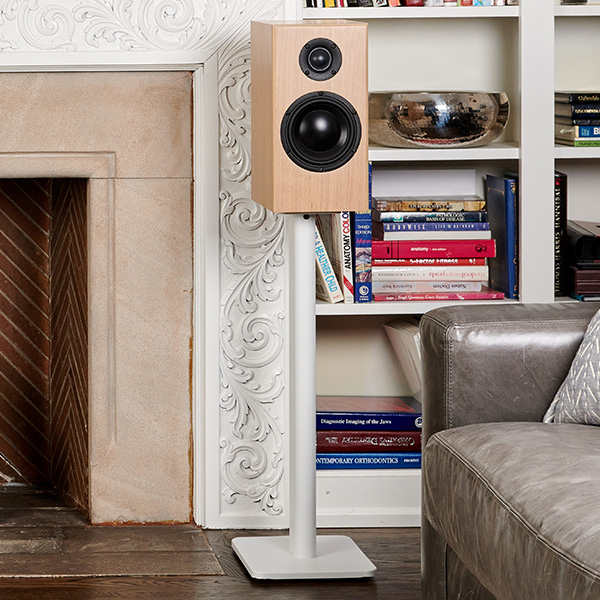Installing in-ceiling and in-wall speakers is a fantastic way to achieve a clean, professional audio setup without cluttering your living space with external wiring or bulky speakers. However, the process of running and fishing wires can seem intimidating for beginners. This guide will provide you with step-by-step instructions on how to effectively run speaker wires through walls and ceilings, along with advanced tips used by professional installers.
By the end of this guide, you’ll be ready to integrate your in-ceiling and in-wall speakers seamlessly into your home.
Tools and Materials You’ll Need
Before starting, gather the following tools and materials:
- Speaker wire (ensure it’s rated for in-wall/ceiling use, such as CL2 or CL3)
- Stud finder
- Fish tape or wire fishing rods
- Drywall saw
- Drill and drill bits
- Measuring tape
- Electrical tape
- Cable clips or staples (for securing wires)
- Utility knife
- Level
- Wire strippers
- Patch kit (for drywall repair)
- Paint (to match your wall or ceiling)
Step 1: Plan Your Wire Path
Start by determining the shortest and most efficient route for your speaker wires. Consider the following:
- Speaker Placement: Decide where your in-wall or in-ceiling speakers will be installed. Use a stud finder to ensure there’s no obstruction behind your chosen location.
- Wire Entry and Exit Points: Identify where the wires will enter (e.g., from an AV receiver) and exit (e.g., to the speakers). Mark these spots with painter’s tape or a pencil.
- Avoid Hazards: Use the stud finder to locate studs, pipes, and electrical wiring in your walls. Avoid running wires through areas with other utilities.
- Run Wires Parallel to Wall Studs and Floor Joists: Whenever possible, run your speaker wires parallel to wall studs and floor joists as this will significantly reduce the number of holes you will need to make in the drywall and patch later.
Step 2: Cut Openings for Speakers and Wires
Once the path is planned:
- Mark the Cutouts: Use the template provided with your in-wall or in-ceiling speakers to trace the exact cutout area on the wall or ceiling.
- Cut the Drywall: Carefully use a drywall saw to cut along your traced lines. Save the cutout pieces for potential patching later.
- Drill Holes Near Your Electronics: Use a drill with a spade bit to create a small entry hole where all of your speaker wires will come out of the wall cavity.
Step 3: Run the Speaker Wires
Running wires through walls and ceilings can be challenging since you will encounter wall studs and floor joists at regular intervals, along with other possible obstructions such as other wiring, plumbing and insulation. However with the right techniques and tools, the process becomes much easier. Below, let’s take a look at detailed tips and tricks that will help you with each scenario.
Fishing Wires Through Walls
- Mark Wall Stud Locations:
- Use the stud finder to locate the wall studs and mark each one with a pencil
- Start with Pilot Holes:
- Drill small pilot holes at your wire entry and exit points. These will help you verify the location is free from obstructions before making larger cuts.
- Use a long, flexible drill bit for deeper walls or angled drilling.
- If you are running wires horizontally inside a wall, you will need to drill a hole inside every wall cavity between wall studs, which are usually placed about 16-inches apart [note: the distance between wall studs may be different depending on where you live]. The hole inside each wall cavity will later allow you to feed the speaker wires horizontally side the wall.
- One of the best places to run wires is behind baseboards, if possible, because you can conceal most of the holes behind the baseboard. To do this, carefully remove your baseboards and drill all your holes low enough so that they won’t be visible once you reinstall the baseboards.
- Another approach is to replace your baseboards with baseboards that have a wire channel inside them. There are lots of companies that sell baseboards with wire channels today.
- Use a Fish Tape or Wire Rods:
- Insert the fish tape into the wall cavity at your entry hole and guide it to the exit hole.
- If the path is blocked by insulation or other obstacles, use fish rods, which are stiffer and easier to maneuver around obstructions.
- Dealing with Insulation:
- For walls with loose-fill or batt insulation, use a wire rod with a hook attachment to “punch through” the insulation and create a clear path.
- Work slowly to avoid compressing the insulation excessively, which could affect its effectiveness.
- Magnet Pulling Tool:
- A strong magnet fishing tool can help guide wires through tight spaces. Attach a metal ball to the wire end and use the magnet on the outside of the drywall to guide it along the path.
- Cut Access Holes Sparingly:
- If you encounter a blockage, cut a small access hole near the obstruction. Use the same hole to pull multiple wires if needed, reducing the number of drywall repairs.
- Drop String Technique:
- When fishing wires from a lower point to a higher point, attach a small weighted object (like a metal washer) to a thin rope and drop it from the higher hole to the lower one. Once the weighted object reaches the lower hole, attach your speaker wires to it with tape and pull the rope from the top hole to feed the wire through the wall.
- Running Wires Through Wall Studs:
- Use a power drill with a spade or auger bit to drill holes through the center of each wall stud along your planned wire path. Keep the holes at least 1 1/4 inches from the stud’s edges to prevent screws or nails from puncturing the wire.
- Start from one end of the stud bay and feed the wire through the drilled holes.
- If the wire path is long or obstructed, use fish tape to guide the wire through multiple studs.
Fishing Wires in the Ceiling
- Start from the Easiest Access Point:
- If your ceiling has an attic or crawl space above it, use that space to guide the wires. This is typically the simplest method as it avoids cutting into drywall.
- Use a headlamp or work light to clearly see the layout.
- Use Gravity to Your Advantage:
- For ceilings without attic access, insert the speaker wires from the higher point and let gravity help them drop toward the speaker cutout.
- If gravity isn’t enough, attach a small weight like a metal washer to the end of the wires or use a wire rod to push the wires downward.
- Run Wires Parallel to Floor Joists:
- Always run your speaker wires parallel to floor joists, inside floor joist cavities. This approach will highly reduce the number of holes you will need to make in your ceiling and patch later.
- Use a spade or auger bit to drill holes through the joists, ensuring they are centered along the width of the joist to maintain structural integrity.
- Space the holes at least 2 inches from the edges of the joist to avoid weakening the wood.
- Plan a path with as few bends as possible to reduce the risk of damaging the wire or creating kinks.
- Insert fish tape or rods through the drilled holes and pull the wire through the joist bays.
General Tips for All Scenarios
- Label Your Wires: Before running wires, label each end to avoid confusion during installation.
- Use Wire Lubricant: In tight spaces or with long runs, apply a wire-pulling lubricant [any cooking oil will also do the job] to make fishing easier and reduce the risk of wire damage.
- Test Continuity: Before securing wires permanently, use a multimeter to check for continuity and ensure there are no breaks in the wiring.
Step 4: Connect the Wires to Your Speakers
Strip the ends of your speaker wire using wire strippers, exposing enough copper to connect securely to your speakers. Follow the speaker manual for proper connection instructions to ensure optimal performance.
Step 5: Patch and Paint the Drywall
After the wires are installed, you’ll need to restore your walls or ceilings to their original condition:
- Patch the Holes: Use a drywall patch kit to cover any holes made for fishing wires. Smooth the surface with a putty knife and let it dry.
- Sand and Paint: Sand the patched area until it’s flush with the surrounding drywall. Paint over the patch to match the existing wall or ceiling color.
Advanced Tips From the Pros
- Use a Cable Raceway: If you cannot run wires inside walls due to structural limitations, consider using a cable raceway for a clean, professional look.
- Test Connections Before Finalizing: Test your speaker connections and sound quality before patching and painting to avoid rework.
- Use Pull Strings: If you plan future upgrades, run a pull string alongside your speaker wires. This makes it easier to add or replace cables without reopening the walls or ceiling.
- Invest in Quality Tools: A good fish tape or set of wire fishing rods can save hours of frustration.
- Label Your Wires: Label both ends of each wire to make troubleshooting and future upgrades much simpler.
Conclusion
Running and fishing wires for in-ceiling and in-wall speakers may seem daunting at first, but with careful planning and the right tools, it can be a manageable DIY project. Happy installing!If you enjoyed this article, explore more tips, tricks, and insights in our News + Reviews section. Whether you’re an audio enthusiast or a professional installer, you’ll find valuable information to enhance your sound system.




